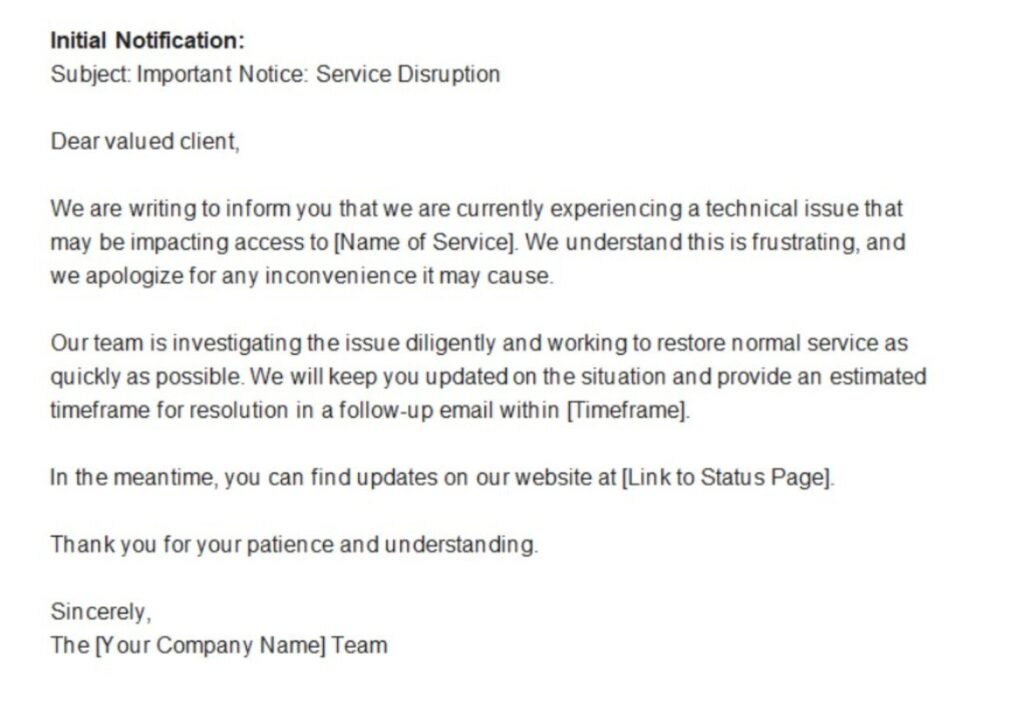Here’s a statistic that might surprise you: less than half of the world’s organizations have business continuity plans. Which side of the coin does your title company fall on?
Regardless of your title software or business structure, there is always a security risk looming: Cyber threats, phishing scams, malware attacks, and wire fraud – not to mention the potential for a freak accident or natural disaster.
Proactive title professionals understand this reality. And yet, it’s worth asking yourself just how prepared your company is. Can you confidently say that you are truly resilient? To get ahead of potential threats in the future, we’ve created this handy incident response checklist to analyze your current business strategy. Let’s dig in.
▢ Question 1: Have You Established an Incident Response Team (IRT) for Your Title Insurance Company?
Start by creating an internal team to specifically handle any sort of unexpected incident. Determine clear roles. Depending on your resources, choose a coordinator, security analysts, a communications lead, legal advisors, and IT support. Each person should know what to do at any given moment.
Whether you’re dealing with outages due to cyber threats or natural disasters, your team members should know what to do. Taking proactive steps here ensures rapid responses to whatever the situation is.
▢ Question 2: Are Your Incident Detection and Reporting Mechanisms in Place for Your Title Business?
Set up systems to quickly spot and report incidents. Implement tools for real-time monitoring and create a straightforward reporting process accessible to all team members. Use this point on this incident response checklist to foster a culture of investment and responsibility.
Team members should not only know their roles, but how to execute them and why they are valuable. Establishing robust detection and reporting systems minimizes damage while providing an opportunity to gain competitive advantages.
“View crises as inevitable disruptions to be prepared for, managed, and leveraged for competitive opportunity, rather than infrequent one-off events to be defended against ad hoc.”
▢ Question 3: Have You Conducted a Recent Risk Assessment and Security Review for Your Title Insurance Firm?
Kick-off with a thorough assessment to pinpoint your system’s vulnerabilities and the potential impacts of an incident. This step might seem basic, but you need to understand your current situation. It’s how you know where your defenses might be weakest and where to concentrate your improvement efforts.
A well-conducted initial assessment lays the groundwork for a resilient security strategy that adapts over time.
▢ Question 4: Is Your Incident Response Strategy Ready and Tested?
This is a key point of this incident response checklist. Did you know that about 30% of a business’s long-term relative total shareholder return is related to how it performs during a crisis? If you’re not ready and tested, you are taking a massive financial risk.
Simulate various cyber incident scenarios to challenge your team and refine how they respond. Regular testing and drills mean your team is as prepared as they can be for whatever might happen. The proactive approach creates a culture of commitment to security.
Tip: Utilize 3 Different Types of Communication: Initial (as soon as the incident is confirmed, illustrated below), Continuous Updates (however many it takes), and a Final Resolution (once the incident has been resolved).

▢ Question 5: Do You Have an Investigation and Analysis Process for Your Title Company?
Successful incident response is about responding as much as it’s about understanding. Develop a pragmatic investigation and analysis process for when incidents occur. Set up protocols for immediately diving into the details of the incident and determining its cause.
The process should include gathering and preserving evidence, analyzing breach extents, and identifying the exploited vulnerabilities. Learn why it happened now, prevent it from happening again, and build towards a more resilient future.
▢ Question 6: Have You Reviewed and Updated the Post-Incident Process at Your Title Business?
Ensure your post-incident process includes a thorough review to assess how effectively the incident was handled. Are there areas for improvement? This report should provide actionable insights that shape your incident response plan in the future.
Make sure you have a protocol for providing incident reports to clients. These should include an incident overview, analysis, actions taken, and recommendations for preventing similar occurrences. Nailing this part of the process not only improves your response but fosters trust with your clients through transparency.
Build Your Incident Response Plan Today
This incident response checklist pinpoints the holes and opportunities within your title insurance firm. Answering each question honestly is a step towards true resilience for your organization.
The right incident response plan is not just about peace of mind. It’s a strategic business opportunity.
At Premier One, we help our title clients build response plans that work. No matter how many boxes you checked on this list, we’re here to support you, as we have all of our clients since 1991.
Let’s talk about your title company’s incident response plan today.


